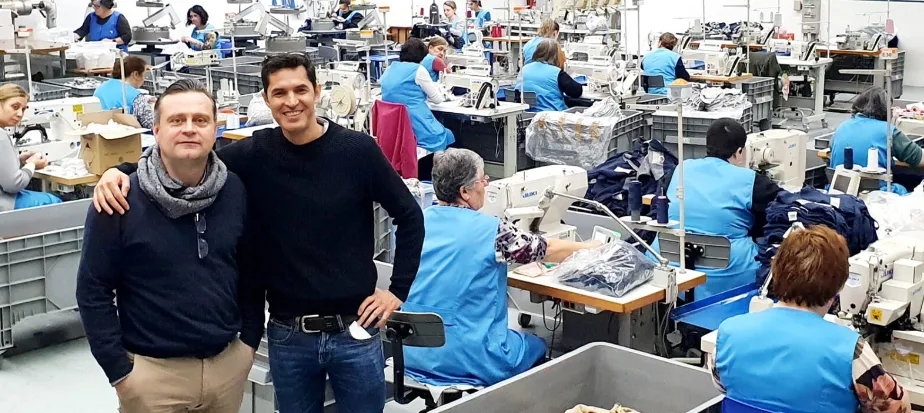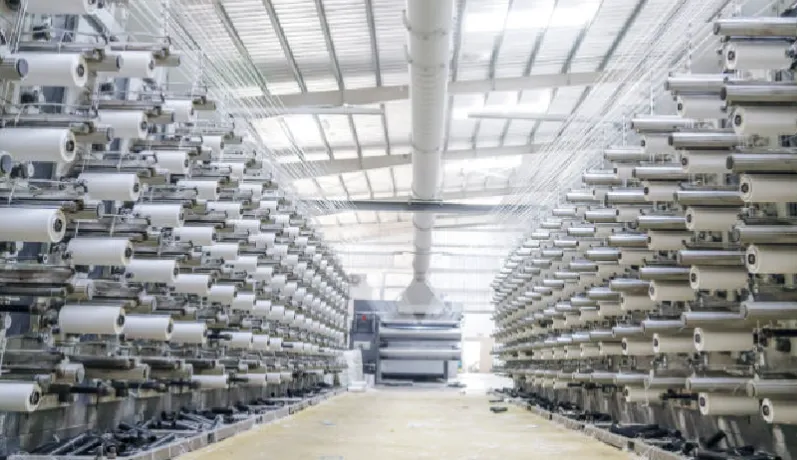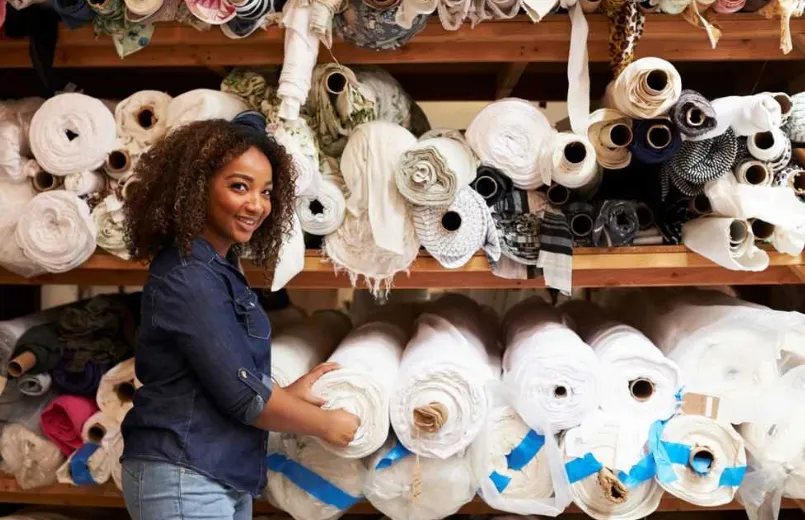What is a Textile Sourcing Agent? (Strategic Partner Guide)

If you're asking, "What is a textile sourcing agent?" you're likely beyond a simple dictionary definition. You're probably wondering if hiring one is the right move to solve your real-world problems: rising costs, inconsistent quality, or the sheer headache of managing a complex global supply chain.
Here’s the thing: a modern sourcing agent isn't just a middleman who finds factories. Think of us as your external procurement department and supply chain risk manager, rolled into one. We're the boots on the ground that turn your product vision into a manufacturable, high-quality, and cost-effective reality, while keeping you compliant and resilient.
In this guide, I’ll not only define the role but give you a practical framework to decide if you need one, how to choose the right partner, and critically—what it costs and how to manage it for maximum ROI. Let's break it down.

At its core, a textile sourcing agent is a company or individual based in the sourcing country (like China, Vietnam, or Pakistan) that acts on your behalf to find, vet, and manage suppliers.
But the role has evolved. Let’s look at the difference between the old and new models:
| The Traditional Agent (The Order-Taker) | The Modern Strategic Partner (The Problem-Solver) |
|---|---|
| Focuses on getting the lowest unit price. | Focuses on Total Cost of Ownership (including quality, logistics, and risk). |
| Manages basic communication and orders. | Provides supply chain mapping and risk mitigation (e.g., dual sourcing). |
| Reactive problem-solving (when things go wrong). | Proactive quality engineering and process improvement. |
| Has little focus on compliance. | Embeds ESG (Environmental, Social, Governance) and ethical sourcing into the process. |
In short, a true partner doesn't just save you money; they save you from catastrophic mistakes.
How do you know if the investment is right for you? Look for these signals in your business:
You're Entering a New or Technically Complex Category. Sourcing performance fabrics like recycled PET or temperature-regulating materials requires specialized mill knowledge a generalist simply won't have.
Your Quality Failure Costs are Skyrocketing. If you're constantly dealing with rejected shipments, color mismatches, or broken seams, the root cause is often poor factory selection and a lack of on-site oversight.
Supplier Management is Consuming Your Day. You're spending more time chasing factories for updates than on design and marketing. An agent acts as a single point of contact, streamlining communication.
Compliance is Becoming a Legal and Reputational Risk. With new laws around sustainability and forced labor, you can’t afford to guess if your suppliers are compliant. A good agent audits factories for you.
Your Supply Chain is Fragile. If one delayed shipment from a single factory can halt your entire operation, you need an agent to help you build a resilient, multi-source supply chain.
This is the most critical part. Picking the wrong agent can be worse than having no agent at all. Use this framework during your interviews.

(H3) 1. Technical & Market Expertise
Don’t just ask, “Do you source fabrics?” Ask, “What are the leading mills for organic cotton knits in Taiwan, and how do their MOQs and lead times differ?” A great agent will have specific, current market intelligence. They should be able to advise you on material substitutions that save cost without sacrificing performance.
(H3) 2. Ethical & Sustainable Sourcing Capabilities (The New Non-Negotiable)
This is where amateurs get weeded out. You must ask:
“How do you verify a factory’s social compliance?” Look for answers like, “We use a checklist based on SMETA/SA8000 and conduct unannounced audits.”
“Can you track and document material certifications like GOTS or Oeko-Tex?” They should understand the chain of custody.
“What is your process for ensuring REACH or other chemical compliance?” They should insist on third-party lab tests.
(H3) 3. Transparency & Quality Assurance Systems
Anyone can say they do QC. The best ones show you their system. Ask to see a redacted version of their:
Inspection Report: It should be based on AQL standards and include photos, data, and clear pass/fail criteria.
Supplier Scorecard: How do they track factory performance over time (on-time delivery, defect rates)?
Transparency in communication is key. Will you get a weekly update, or will they only call you with problems?
(H3) 4. Commercial Transparency & Risk Mitigation
Let's talk money and contracts. Be wary of vague pricing.
Fee Structure: Is it a percentage of FOB cost (industry standard is 5-10%), a flat fee, or a retainer? Get it in writing.
Payment Terms: Your payments should flow through a secure method. Never pay 100% upfront to a factory. The agent should help structure safe terms (e.g., 30% deposit, 70% against Bill of Lading copy).
IP Protection: Your contract must include a robust Non-Disclosure (NDA) and Non-Circumvention Agreement. This protects your designs from being stolen or sold to your competitors.
(H3) 5. Strategic Partnership Mindset
A transactional agent takes your order. A partner looks for ways to improve your business. Ask, “Can you give me an example where you helped a client improve their product or reduce costs beyond just negotiation?” The answer might be about value engineering—suggesting a different stitch type that’s faster for the factory (cheaper for you) but just as durable.
Let's talk numbers. Being clear on cost structures builds trust and prevents surprises later. Here are the three main models:

Percentage of Order Value (5-10%):
How it works: A commission based on the Free-On-Board (FOB) value of your order.
Best for: Ongoing relationships where your order volume may fluctuate.
The Trade-off: It aligns their incentive with getting your order shipped, but ensure they are also incentivized on your total cost savings, not just the factory's price.
Fixed Project Fee:
How it works: A one-time fee for a defined project, like sourcing and launching one specific product.
Best for: One-off, well-defined projects with a clear scope.
The Trade-off: You have cost certainty, but it may not be flexible if your needs change.
Monthly Retainer:
How it works: A fixed monthly fee for a set number of hours or services.
Best for: Established brands with a continuous flow of work.
The Trade-off: Guarantees the agent's attention and capacity for your business.
A word of caution: If a quote seems too good to be true, it probably is. Exceptionally low fees can be a red flag that the agent plans to make money through hidden factory kickbacks, which completely misaligns their incentives with yours.
To avoid misunderstandings, you need a clear scope of work. Here’s a typical breakdown of core versus add-on services.
Core Services (Usually Included):
Supplier identification and vetting (against your criteria).
Price and term negotiation.
Order placement and primary production follow-up.
Pre-shipment quality control inspection (based on AQL).
Documentation and logistics coordination support.
Add-On Services (Often Extra):
Deep-Dive Audits: Social compliance (SMETA), environmental, or capacity audits.
Product Development: Prototyping, tech pack refinement, and sample management.
During-Production Checks: Visits to the factory during production, not just at the end.
Full Logistics Management: Handling everything from freight forwarding to customs clearance.
The key is to get this in writing. Before you sign, the proposal should detail exactly what each service includes.
Once you’ve hired an agent, manage them based on outcomes, not just activity. Shift your focus from unit price to these key performance indicators (KPIs):
On-Time In-Full (OTIF) Delivery Rate: Are your collections arriving complete and when you need them? Target >95%.
First-Pass Quality Yield (FPQ): What percentage of goods pass inspection the first time? This measures their vetting and oversight effectiveness.
Cost Savings from Value Engineering: Track savings that come from smart material or construction changes, separate from hard negotiation.
ESG Compliance Rate: What percentage of the suppliers they propose meet your ethical and environmental standards? This should be 100%.
Understanding the theory is one thing; taking action is another. To help you move forward with confidence, we've put together a toolkit used by professional procurement teams.
[Download Our Free "Strategic Sourcing Starter Kit"]
This kit includes:
Sourcing Agent RFP Template: Based directly on the 5-Point Vet Checklist, so you can compare candidates fairly.
Supplier Code of Conduct Template: A ready-to-use document to set clear ethical and environmental expectations from day one.
Pre-Sourcing Checklist: A worksheet to organize your own requirements before you even talk to an agent, making you a more informed and effective client.
Some questions are too specific for any article. If you're looking at your business, weighing the costs and benefits, and still feel stuck, sometimes you just need to talk it out.
We offer a no-strings-attached conversation to help you clarify your next step.
[Book a Free 30-Minute Sourcing Strategy Session]
During this call, we'll help you:
Analyze your current sourcing challenges.
Determine if a sourcing agent is the right solution for your stage of growth.
Outline a clear action plan for moving forward—whether you work with us or not.
Hiring a sourcing agent is a significant decision. But with the right framework, the right questions, and the right partner, it can be the strategic move that unlocks your brand's global potential.
1. Q: How do you handle communication and time zone differences between me and the factory?
A: We act as your primary point of contact and operate in the factory's time zone. We schedule and lead all crucial calls with the factory, providing you with summarized updates and clear action items in your local time. This eliminates the 3 a.m. calls and ensures nothing gets lost in translation.
2. Q: What happens if I'm not satisfied with the factory you recommend?
A: We never force a partnership. Our process includes presenting you with 2-3 pre-vetted supplier options, complete with our due diligence reports. If none meet your standards, we go back to the drawing board at no extra cost until we find the right fit. The final choice is always yours.
3. Q: Can you help me source small, custom components like unique zippers or branded tags?
A: Absolutely. In fact, this is where we add significant value. Sourcing custom trims and components is often more complex than finding main fabric suppliers. We manage this entire process, consolidating all items for a final shipment, which saves you multiple shipping fees and logistical headaches.
4. Q: Do you have a minimum order value (MOV) or volume (MOQ) to work with you?
A: We tailor our services to your needs. For established brands, we typically work on a project or retainer basis. For startups and smaller businesses, we offer a flexible "starter" program designed to help you scale without a prohibitive upfront commitment. Let's discuss your specific volume to find the right fit.
5. Q: How do you stay updated on new fabric technologies and sustainable material innovations?
A: This is a core part of our job. We attend major international fabric fairs (like Intertextile Shanghai), maintain active relationships with mill R&D departments, and subscribe to industry trend forecasting services. We proactively bring new material opportunities to our clients to keep their products competitive.
6. Q: What is your specific process for protecting my designs when you share them with potential factories?
A: Before any designs are shared, we ensure all potential factories have signed a robust Non-Disclosure Agreement (NDA). Furthermore, we often use "teaser" tech packs for initial quotes, omitting critical construction details until a factory is formally engaged and fully under contract.
7. Q: If a factory suddenly increases its price after we've placed an order, how do you handle it?
A: We build price protection into the purchase order. A reputable factory will honor the quoted price for the duration of the order. If a price hike is attempted, we negotiate on your behalf, leveraging our relationship and the factory's need to maintain its reputation. We only accept changes in cases of proven, significant raw material market shifts, and we always fight for the most favorable terms for you.
8. Q: Can you help me visit the factories in person?
A: Yes, we can arrange and accompany you on factory tours. We recommend this for strategic, long-term partners or for high-value initial orders. We act as your translator and guide, helping you ask the right technical and compliance questions to get a true sense of the operation.
9. Q: What is your policy if I want to stop working with you and approach the factory directly in the future?
A: Our contracts include a standard Non-Circumvention clause, which is standard industry practice to protect our business. This means that for a specified period (e.g., 2-3 years), you cannot directly work with suppliers we introduced to you. This protects the network and relationships we've built and shared in good faith.
10. Q: How do you verify a factory's actual production capacity to ensure they can handle my order?
A: We go beyond their claims. We audit their machinery list, check their power consumption records, and interview a sample of their workers to verify shifts and overtime patterns. We also speak to their raw material suppliers to understand their credit lines and purchasing volume, which gives a clear picture of their true capacity.
Contact us
Call Us: +86 193 7668 8822
Email:[email protected]
Add: Building B, No.2, He Er Er Road, Dawangshan Community, Shajing Street, Bao'an District, Shenzhen, China